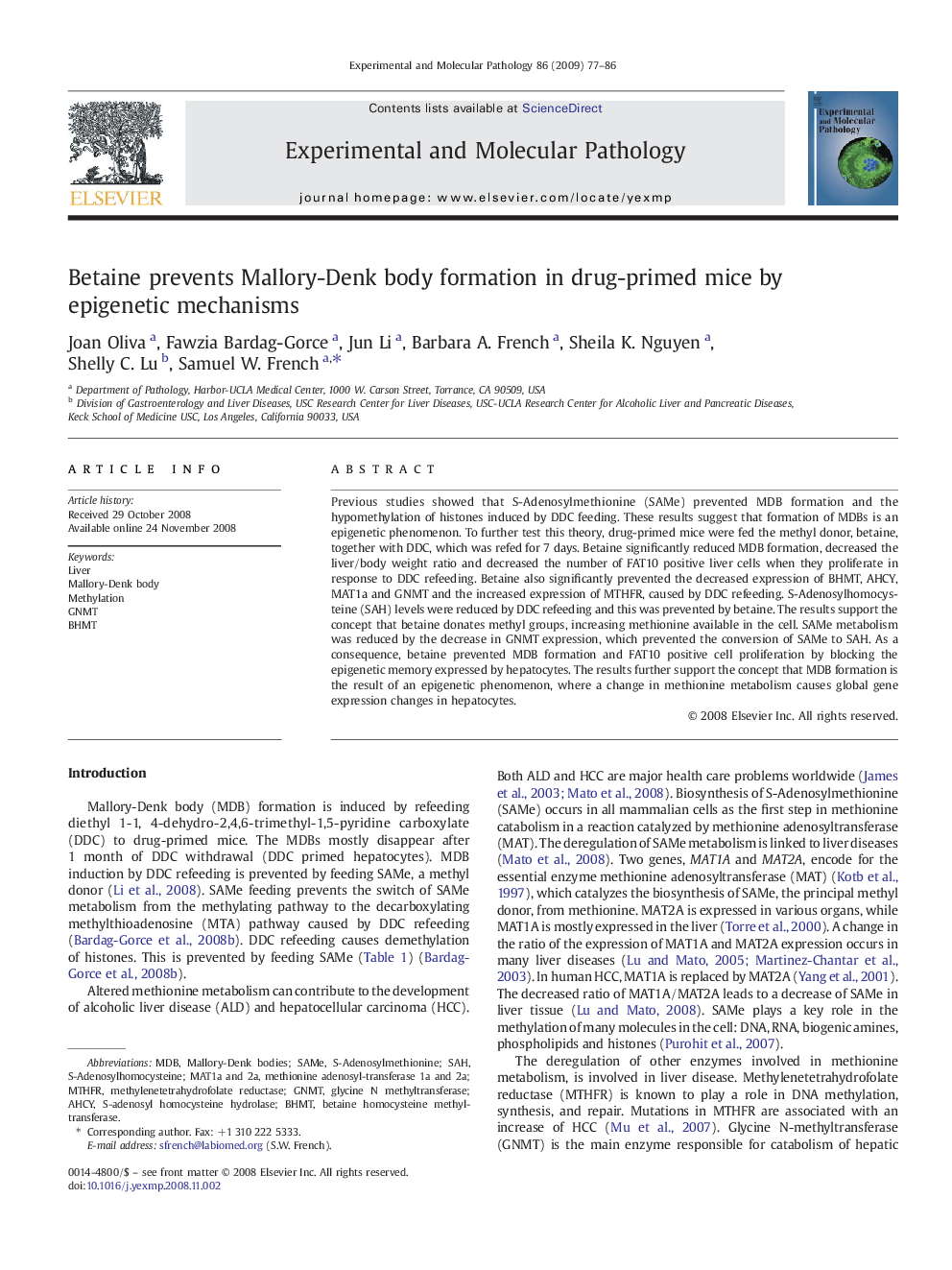| Article ID | Journal | Published Year | Pages | File Type |
|---|---|---|---|---|
| 2775726 | Experimental and Molecular Pathology | 2009 | 10 Pages |
Previous studies showed that S-Adenosylmethionine (SAMe) prevented MDB formation and the hypomethylation of histones induced by DDC feeding. These results suggest that formation of MDBs is an epigenetic phenomenon. To further test this theory, drug-primed mice were fed the methyl donor, betaine, together with DDC, which was refed for 7 days. Betaine significantly reduced MDB formation, decreased the liver/body weight ratio and decreased the number of FAT10 positive liver cells when they proliferate in response to DDC refeeding. Betaine also significantly prevented the decreased expression of BHMT, AHCY, MAT1a and GNMT and the increased expression of MTHFR, caused by DDC refeeding. S-Adenosylhomocysteine (SAH) levels were reduced by DDC refeeding and this was prevented by betaine. The results support the concept that betaine donates methyl groups, increasing methionine available in the cell. SAMe metabolism was reduced by the decrease in GNMT expression, which prevented the conversion of SAMe to SAH. As a consequence, betaine prevented MDB formation and FAT10 positive cell proliferation by blocking the epigenetic memory expressed by hepatocytes. The results further support the concept that MDB formation is the result of an epigenetic phenomenon, where a change in methionine metabolism causes global gene expression changes in hepatocytes.
